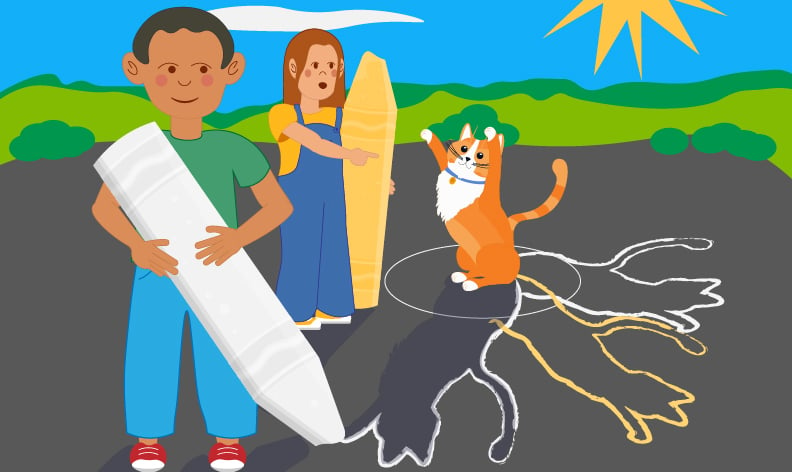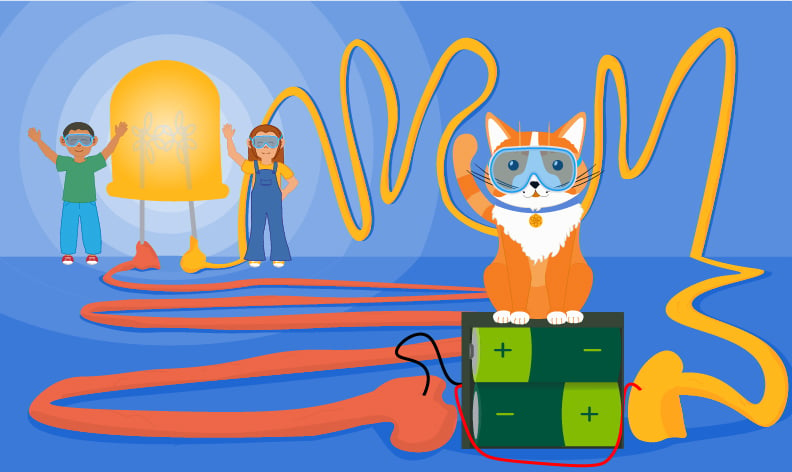School’s out for summer, but that doesn’t mean we stop exploring. Perimeter Institute’s Teachers in Residence, Ashley McCarl Palmer and Dave Fish, are here to share four hands-on educational activities that will keep kids busy and learning all summer long. We know you’ll love them. After all, you can’t go wrong with any physics experiments that involve ice cream!
1. View the night sky with binoculars
Take advantage of warm summer nights and head outside for some stargazing. You don’t need a fancy telescope for a glimpse of the cosmos; a pair of binoculars will do just fine. In fact, today’s binoculars are equal in power to the telescope famed astronomer Galileo used to make world-changing discoveries.
A great way to track your celestial observations is through journaling. We recommend starting with the phases of the Moon.
Every 27 days, the Moon completes an orbit around the Earth. As the Earth and Moon travel together through space, the Moon's appearance changes depending on what parts of it are lit up by the Sun.
Track the Moon throughout the month, making drawings and notes documenting its shifting appearance. The Moon will move through 8 phases; see if you can identify when they occur! NASA has a fantastic guide that can help you work out the different phases.
Once you’ve mastered moon phases, there’s still lots more to discover in space with your binoculars! For that, check out our article 4 Objects Galileo Discovered with His Telescope that You Can See with Binoculars.
2. Chalk sundials
Not a night owl? You can still practice your observation skills in the daytime by creating chalk sundials.
For this experiment, you’ll need chalk, a way to keep time, and an extra person to help. You’ll want to set aside some time for this activity – you'll be popping in and out of it over the course of the day.
Start by picking a standing spot and marking it on the ground with an ‘X’. On every hour, stand on the X and note the time. Then, have your friend trace the outline of your shadow on the ground.
As the day goes by, your shadow will move and distort. This is because the Earth rotates around an axis, which causes the Sun to move from east to west across the sky.
Sundials are the oldest method we have for telling time. See if you can use your home-made sundial the next day to tell the time!
3. Build your own circuit
You can use this hands-on activity to learn about electricity. You’ll need a handful of supplies: some playdough, a battery pack with wires plus batteries, and some mini LED-diodes. The LEDs look like tiny holiday lights with two metal prongs sticking out at the end.
Start by rolling out your playdough into two snake-like shapes. Stick the wires from the battery pack into the ‘head’ so that each snake has one wire attached.
Now grab your LED and put one of its metal legs into each playdough snake. Turn on the battery pack and let there be light!
If there’s no glow, you might need to flip the LED so that the legs are in the opposite snake. Start with the LED close to the battery pack. Then you can try moving the LED further and further away from the pack and see where you can still get light.
Playdough is a conductive material – that means electricity can flow through it. By creating a path from the positive end of the battery to negative, electricity flows through what is called a closed circuit.
If you pull one of the legs of the LED out of the playdough, the path is broken and the light will turn off. This is called an open circuit.
For older kids, Perimeter’s Outreach team has a guided lesson plan on how to use this experiment to learn about Planck’s Constant, an important concept in quantum physics.
4. Ice cream
We’ve saved the best for last – this experiment is all about ice cream!
Have you ever found your ice cream melting too fast in the summertime? What if there was a way to make your ice cream melt more slowly?
For this activity, grab some bowls made from different materials. You can try things like wood, glass, metal, and plastic. Place an ice cube (or scoop of ice cream) in each container and then time how long it takes to melt.
Heat naturally moves from warmer objects to cooler ones. In this case, heat from the surrounding air will cause our ice (and ice cream!) to melt. But different materials are better than others at transferring heat; this is known as an object’s conductivity. Your experiment will show you which material is the least conductive, aka the slowest at transferring heat. Once you’ve determined the winner, you’ll know which bowl is best, so celebrate with a heaping scoop of your frozen treat of choice!
About PI
Perimeter Institute is the world’s largest research hub devoted to theoretical physics. The independent Institute was founded in 1999 to foster breakthroughs in the fundamental understanding of our universe, from the smallest particles to the entire cosmos. Research at Perimeter is motivated by the understanding that fundamental science advances human knowledge and catalyzes innovation, and that today’s theoretical physics is tomorrow’s technology. Located in the Region of Waterloo, the not-for-profit Institute is a unique public-private endeavour, including the Governments of Ontario and Canada, that enables cutting-edge research, trains the next generation of scientific pioneers, and shares the power of physics through award-winning educational outreach and public engagement.



